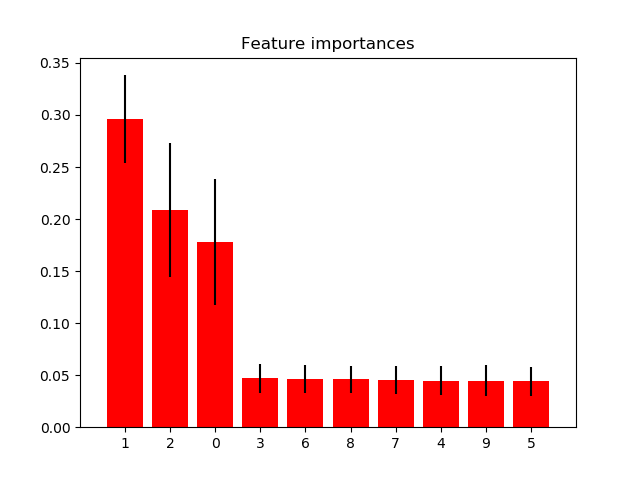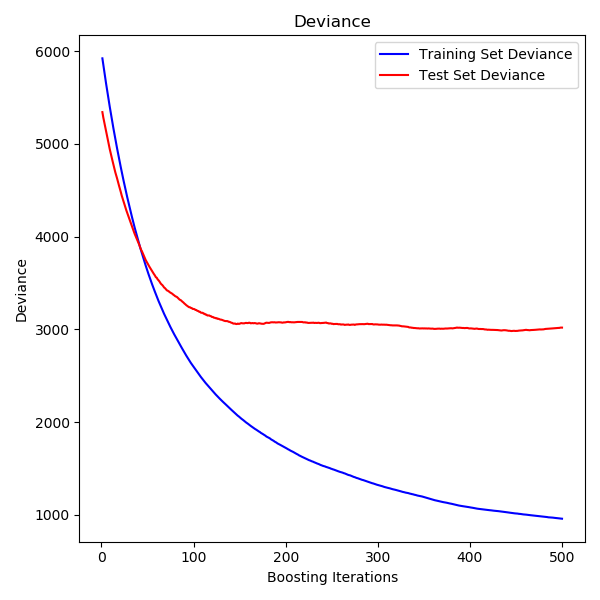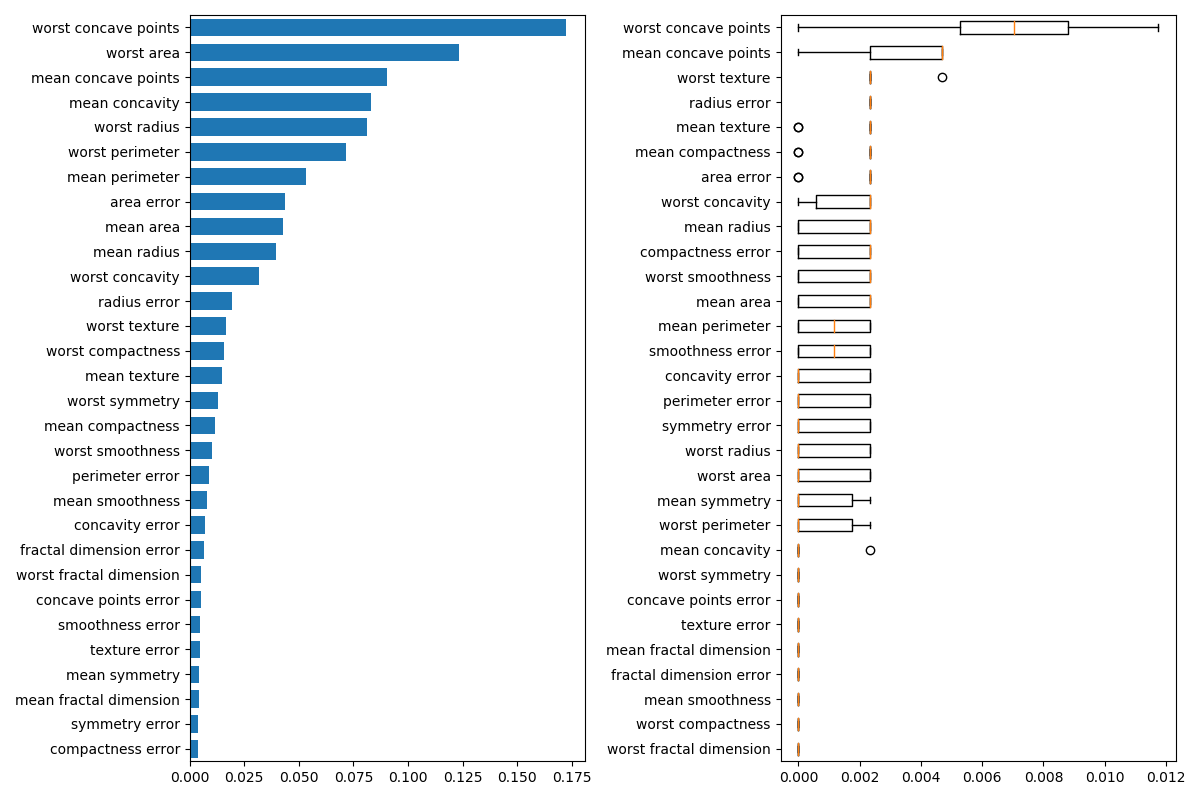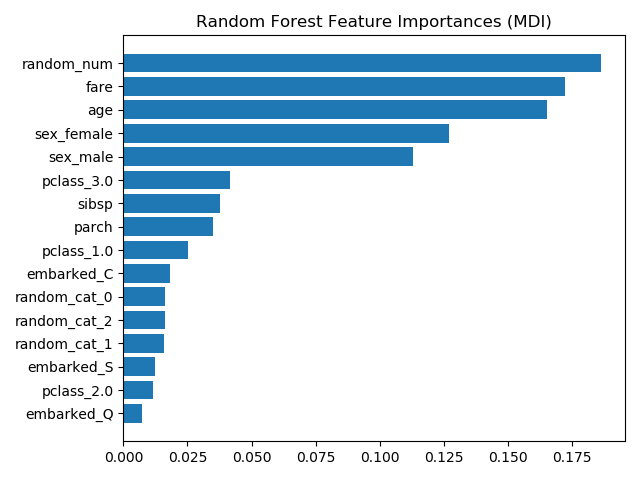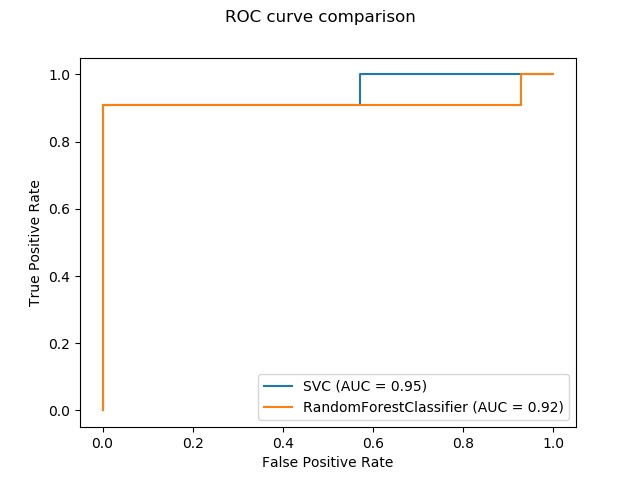sklearn.inspection.permutation_importance?
sklearn.inspection.permutation_importance(estimator, X, y, *, scoring=None, n_repeats=5, n_jobs=None, random_state=None)
[源碼]
特征評估的置換重要性[BRE]。 估算器必須是擬合估算器。X可以是用于訓練估算器的數據集,也可以是保留集。特征的排列重要性計算如下。首先,在X定義的(可能不同的)數據集上評估通過評分定義的基線度量。接著,對驗證集中的特征列進行置換,并再次評估度量。 排列重要性定義為基線度量和來自排列特征列的度量之間的差異。 在用戶指南中閱讀更多內容。
| 參數 | 說明 |
|---|---|
| estimator | object 一個已經訓練并且與計分器兼容的估計器。 |
| X | ndarray or DataFrame, shape (n_samples, n_features) 將計算排列重要性的數據。 |
| y | array-like or None, shape (n_samples, ) or (n_samples, n_classes) 有監督的目標,無監督的目標。 |
| scoring | string, callable or None, default=None 使用的評分器。它可以是單個字符串(請參閱評分參數:定義模型評估規則),也可以是可調用的(請參閱從度量函數定義評分策略)。如果為None,則使用估算器的默認評分器。 |
| n_repeats | int, default=5 置換特征的次數。 |
| n_jobs | int or None, default=None 用于計算的作業數。除非在joblib.parallel_backend上下文中,否則None表示1。 -1表示使用所有處理器。有關更多詳細信息,請參見詞匯表。 |
| random_state | int, RandomState instance, default=None 偽隨機數生成器,用于控制每個特征的排列。傳遞一個int通過函數調用獲得可重復的結果。參見:term:詞匯表<random_state>。 |
| 返回值 | 說明 |
|---|---|
| result | Bunch 類字典對象,具有以下屬性。 - importances_meanndarray, shape (n_features, ) 特征重要性超過n_repeats的平均值。 - importances_stdndarray, shape (n_features, ) n_repeats的標準偏差。 - importancesndarray, shape (n_features, n_repeats) 原始排列重要性得分。 |
參考
L. Breiman, “Random Forests”, Machine Learning, 45(1), 5-32, 2001. https://doi.org/10.1023/A:1010933404324
示例
>>>
>>> from sklearn.linear_model import LogisticRegression
>>> from sklearn.inspection import permutation_importance
>>> X = [[1, 9, 9],[1, 9, 9],[1, 9, 9],
... [0, 9, 9],[0, 9, 9],[0, 9, 9]]
>>> y = [1, 1, 1, 0, 0, 0]
>>> clf = LogisticRegression().fit(X, y)
>>> result = permutation_importance(clf, X, y, n_repeats=10,
... random_state=0)
>>> result.importances_mean
array([0.4666..., 0. , 0. ])
>>> result.importances_std
array([0.2211..., 0. , 0. ])

